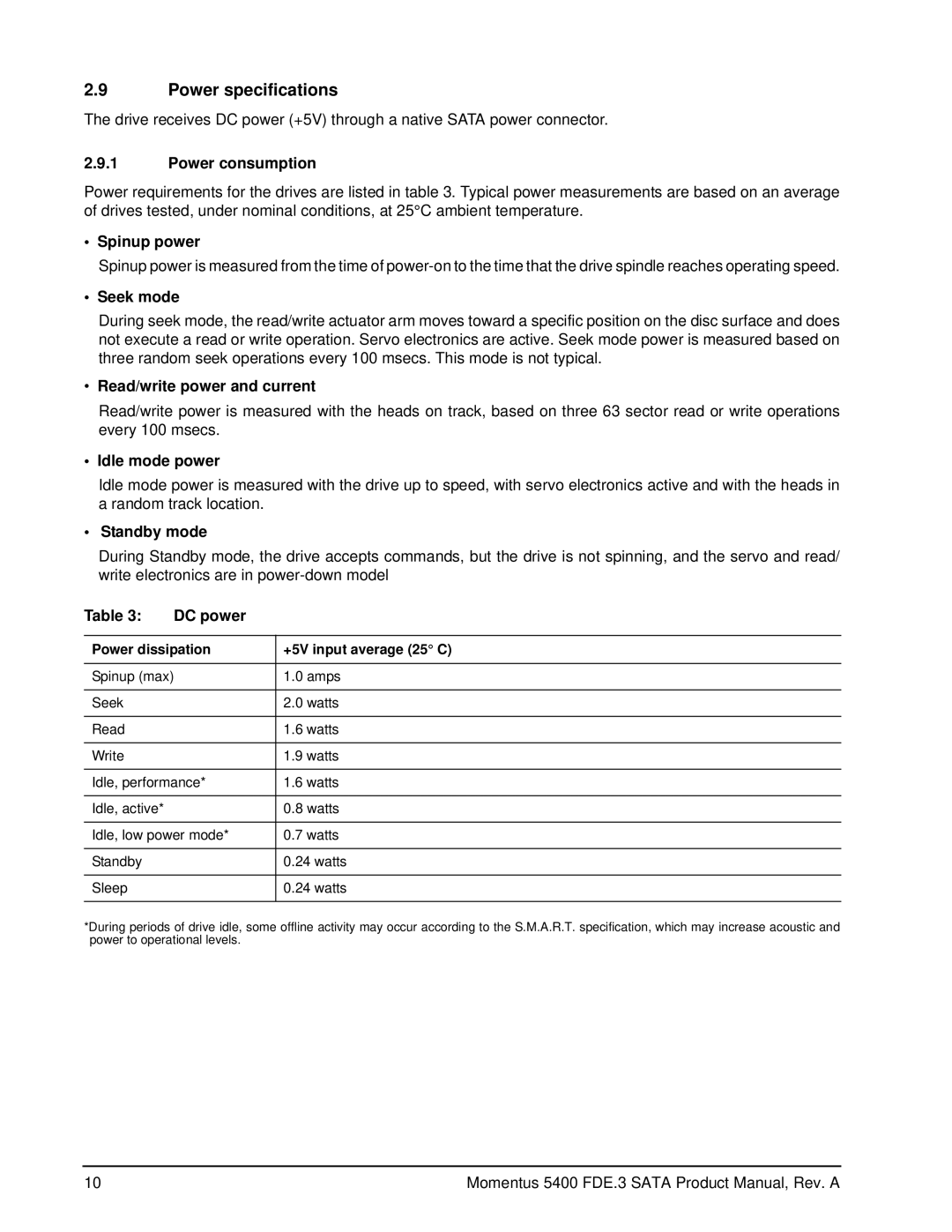ST9120312AS, ST9160312AS, ST9320322AS specifications
The Seagate ST9320322AS, ST9160312AS, and ST9120312AS are hard disk drives (HDDs) designed for reliable storage solutions in various computing environments. These drives belong to the Barracuda line, known for their high performance and robust features.The ST9320322AS is a 320GB, 2.5-inch SATA hard drive that operates at a speed of 7200 RPM. It has a 16MB cache buffer, enhancing data access speeds and allowing for efficient multi-tasking. This drive is particularly suitable for laptops, external drives, and other applications requiring high-capacity storage paired with portability. Its low power consumption makes it an ideal choice for mobile systems, contributing to longer battery life.
On the other hand, the ST9160312AS is a 160GB version, also a 2.5-inch SATA HDD running at 7200 RPM. Like the ST9320322AS, it features a 16MB cache, which optimizes performance for everyday computing tasks. This model is often utilized in gaming consoles and entry-level laptops, offering a balance of performance and affordability. With a height of only 9.5mm, it is designed to fit in ultrathin laptops while providing ample storage space for user data, applications, and multimedia files.
The ST9120312AS further reduces storage capacity to 120GB, while maintaining the same rotational speed of 7200 RPM. This HDD is designed for users looking for reliable, cost-effective storage solutions without compromising on performance. Like its counterparts, it features a 16MB cache and operates efficiently, making it suitable for applications that require moderate data storage, such as basic computing tasks and media storage.
All three models leverage Seagate’s advanced recording technology, which enhances data integrity and reliability. They also incorporate sophisticated error recovery tools that help prevent data loss, ensuring longevity and durability under various operating conditions. These drives support the SATA interface, which provides high-speed data transfer rates, making them compatible with a wide range of computing devices.
In conclusion, the Seagate ST9320322AS, ST9160312AS, and ST9120312AS hard drives represent a strong selection for users in need of reliable, efficient, and compact storage solutions. With their combination of high performance, energy efficiency, and advanced technologies, they continue to serve a vital role in modern computing architectures.
